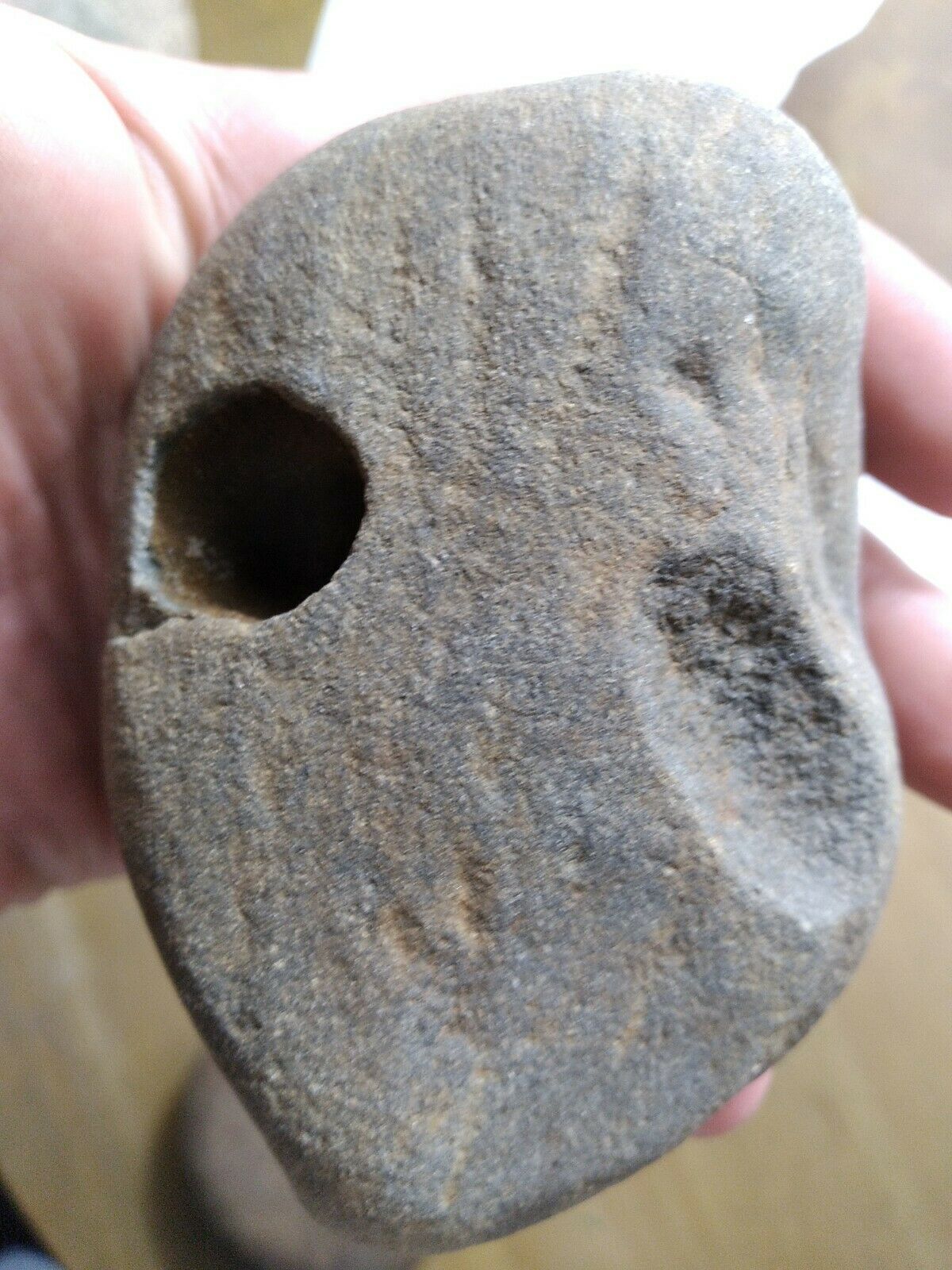-40%
CLUB-19 Genuine Penobscot Native American Root club war weapon ceremonial 1900's
$ 559.14
- Description
- Size Guide
Description
(internal #CLUB-19). Genuine antique PENOBSCOT Native American Root war or ceremonial club.This club is circa early 20th century.
SIGNED AND DATED, original paint
Measures 23" long x 6-1/2" across widest part of club, 1-3/8" diameter widest on club handle
Zoomorphic piece with distinct zebra, and two deer heads,possible bird beaks; one possible anteater; one human full body upside down in center; all points smoothed and painted; 15 distinct points; damage: one leg missing on the human body, one ear from a deer; handle sanded and inlaid cuts painted red and green wheat design and other decorative designs at top and bottom of handle; etched signature in middle of handle: Ralph J Trash, Sept 26th 1901
Weight: 14 ounces
ROOT CLUBS
Background information from
PENOBSCOT NATION MUSEUM -
OLD TOWN, MAINE
Root Clubs were made from root bundles of immature gray birch trees (not war clubs, there was no word for war among this tribal nation) new & old. Short clubs used to finish off a kill on an injured animal, longer clubs made later to stave off soldiers that had spears as weapons. They believed they were releasing the spirits of animals & birds from the wood they were carving. The clubs were also carried in dances and religious ceremonies.
Penobscot Native people in Maine sold off some of their ancestor's clubs, then began making new ones, and re-purchasing the ancient ones, to preserve their Penobscot & Wabanaki cultures.
After digging up a small tree with most roots intact, carvers trim and sometimes completely remove the bark of the sapling. The roots are sharpened and shaped into points, occasionally an animal or spirit will be carved on a root point. Human or spirit faces or animals are carved in the root ball under the points, sometimes incorporating a root point. The stock of the small tree becomes the handle and is then decorated with small cuts; "chip carving". While other cultures use chip carving to decorate wood, among Native Americans primarily the Penobscot but occasionally the Maliseet, Abenaki and Passamaquoddy are the only tribal groups to utilize chip carving as a decorative technique. Penobscots have long been know for the beauty of their chip carved items. Burnt work/pyrography is also used as a decorative technique on root clubs, Passamaquoddy root club makers more frequently use burnt work on their clubs. The root balls are plainer in the older root clubs, some carvings on early root clubs have a reddish vegetal stain, but no paint. Smaller root clubs are thought to have been shaman's clubs for ceremonial use.
The traditional chip carving and designs on root clubs are an ancient skill that was nearly lost. In the late 1880's carvers discovered these could be sold as "tourist items" or "souvenirs". Maine Indian carvers of that era began incorporating designs that sold; a combination of the traditional form but with modern touches that appealed to the buyers . These modern changes included painting the handles and the face or animals carved in the root bundle and using Plains Indian type headdresses on the faces that were traditionally carved on some root clubs. Place and tribal names sometimes appeared on the handles - as tourists liked mementos of where they had visited.
The root ends are carved into points that make it practical for use as a war club, but at the same time resemble either a feathered headdress, or, individually, the sort of peaked caps worn by some of the men and women of the Maine tribes. The Penobscot became part of the Wabanaki Confederacy, an alliance of Native American people that included the Passamaquoddy, Micmac (Mi’kmaq), Abenaki, and Maliseet Indians, who occupied Maine and parts of Canada. The name Wabanaki means “People of the First Light” or “People of the Dawnland,” referring to the fact that they lived where the sun rose on North America.
Root clubs have been viewed by museums and anthropologists as “tourist art,” not “traditional” enough to warrant a place in museums. Decades of research by exhibit curators Stan Neptune and Joan Lester of the Abbe Museum have built the body of evidence to show that this uniquely Wabanaki form, in fact, is very much a part of Wabanaki traditions going back centuries or more. And while new styles have been created over the years to support an economy tied to tourism, the earlier forms have continued and are still being made today. Root clubs started as weapons, then became ceremonial tools as spirit clubs, then became tourist pieces. Increasing complexity in the use of ornamental design parallels the market that grew for these objects.
WE SHIP WORLDWIDE, see the chart for postage to your country.
Click on our eBay Store tag for other WEIRD STUFF!



















